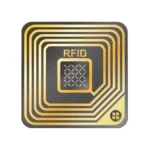Radio Frequency Identification (RFID) technology offers numerous benefits, one of which is its application in animal tracking. RFID in pets is a device that aids in identification and monitoring.
The RFID in pets extends beyond identification and tracking to provide owners with numerous benefits. For example, health management, health monitoring, disease control, and livestock management.
This article will provide you with information about the benefits of RFID in pets that are very helpful to their owners. That way, you can easily maintain your pet.
Also Read
Table of Contents
Benefits of RFID in Pet
RFID in pets not only provides identification and tracking of animals, but it also offers many other benefits. Here are some of the benefits of them in detail:
Health management

RFID in pets has benefits in health management. Animals equipped with this device can have their medical history recorded, including their birth history, breeding history, and treatment records. That way, veterinarians can easily access all data and provide appropriate treatment.
Health monitoring
Another benefit of RFID tags is their use in monitoring and tracking. For example, monitoring health indicators such as movement patterns, providing early warnings for potential health problems, and vaccination reminders. This can increase owners’ awareness of their pets’ health.
Disease control
RFID in pets can also control disease. Animals with this device can be easily identified for disease. This way, animals can be isolated to prevent the spread of disease to other animals.
Livestock management

The benefit of RFID in livestock farming is that it helps improve management efficiency. Animals with these devices can be easily identified and tracked. Modern farms can monitor each animal from birth to processing.
Simplified processes
RFID tags can simplify management processes and make them more efficient. Traditional methods are too complicated for collecting animal data. With RFID devices, data can be collected automatically.
Supply chain transparency
Another benefit of RFID in livestock farming is supply chain transparency. The devices enable tracking of animal movements throughout the supply chain. This ensures that product safety and quality are maintained at the highest level.
Why is Microchipping Pets Important?
With all the benefits of RFID in pets, it is clear that microchipping pets is a crucial step. Pets that have this device can be easily identified.
If a pet goes missing, it can be reunited with its owner more easily. Microchipping also provides peace of mind and can prevent theft. This certainly helps resolve legal issues if the animal causes damage.
Risks of Microchipping Pets
Risks that may occur when implanting RFID chips in pets:
- Infection: If the procedure is not performed under sterile conditions, there is a risk of infection.
- Chip migration: The chip may shift from its original insertion site, making scanning and subsequent operations difficult.
- Swelling or pain: Pets may experience slight swelling or pain at the injection site, which typically resolves within a few days.
- Allergic reaction: Allergic reactions to the chip coating are a rare complication.
- Tumor: In sporadic cases, a tumor may develop at the implant site, but the chances are minimal.
Those are the benefits of RFID in pets that you can experience when using them. Not only do they help with identification and tracking, but they can also easily maintain your pet.
In terms of livestock farming, this device can aid in livestock management, streamline processes, and enhance supply chain transparency. With this device, there is no longer any worry about losing your pet or its health history.












